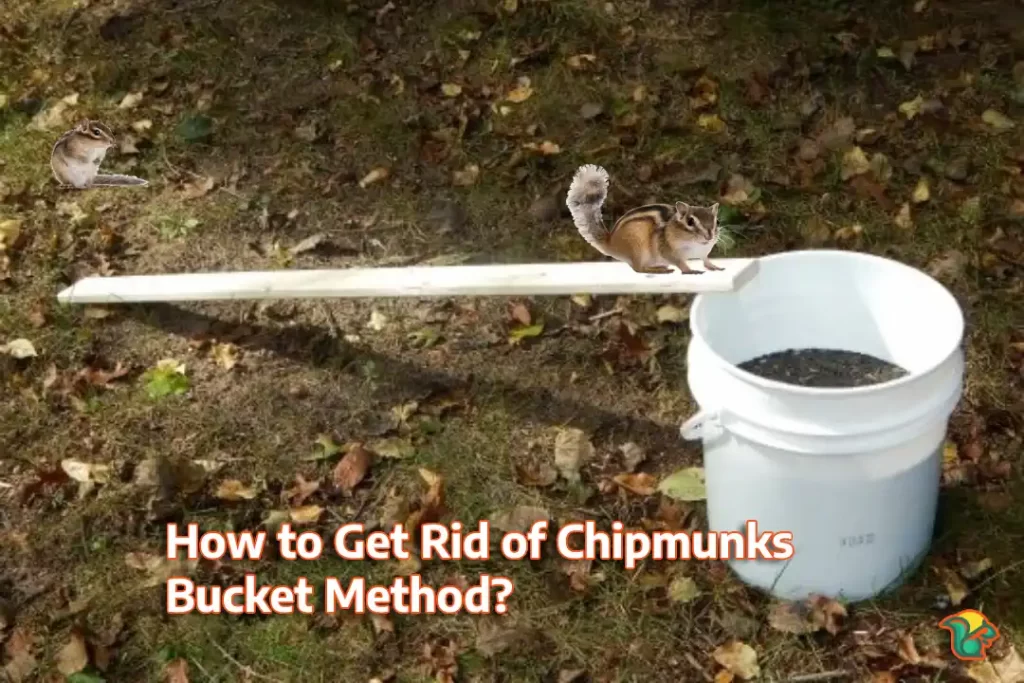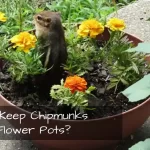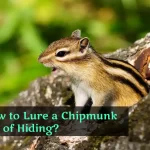How to Get Rid of Chipmunks Bucket Method?
As cute as those short ears and bushy tail looks like- the chipmunks aren’t healthy for your house or the garden. They won’t only ruin the veggies and fruits but will also damage the foundation of your house! Catching a chipmunk can be tougher than killing it.
So, if your state allows you to kill it, don’t hesitate because your property is your responsibility! We have researched how to get rid of chipmunks bucket method and it worked incredibly! You can catch more than one chipmunk in this technique! How? Let’s do the math!

How to Get Rid of Chipmunks Bucket Method: Step-by-Step
Mostly known as the “pool of death” or “swimming pool” method for rodents- catching chipmunk in a bucket of water method is the most expensive trap for them.
Also, this is the most effective homemade trap for catching more than one chipmunk. You can use it for other rodents like squirrels, rats, mice, etc. Let’s skim through this easy DIY method, what do you say?
Step 1: Gather the Ingredients
To begin with the bucket method of getting rid of annoying chipmunks in your yard, first, you have to get your hands on the ingredients and tools. As the name says, it’s a bucket method- we will need a bucket first.
So, what will be the size of the bucket? Well, we recommend you use a 5-gallon bucket for the job. Once you have managed the 5-gallon bucket, move to the next ingredient, which is sunflower seed. For this technique to work, you will need black oil sunflower seeds.
Go to the store and get a bag of black oil sunflower seeds. Another thing that you should get your hands on is a piece of wood. Go for a 3’-4’ piece of wood. According to our recommendation, one 1×3 piece of wood is ideal for the process.
However, if you don’t find it, you can make this process work with a 2×4 piece of wood. And finally, we cannot complete this method without water. So, get some water for the bucket method.
Step 2: Locate the Trap Area
Now that all the ingredients and tools are ready, it’s time to know “how do you get rid of chipmunks in a 5-gallon bucket!” For this method to work, first of all, search for where you will set this bucket trap. As this is a homemade trap, this won’t cost you must.
Go to the yard or garden and search for the areas where you often see the chipmunks. There are some specific places where these little rodents cause the most damage.
Locate this area and this is where you need to set the trap. While selecting the area, the best place you can go for is flat level ground. Move to the next step right when you feel you are ready.
Step 3: Pour Water in the Bucket
So, the area for setting the trap is finalized. It’s time to work with the bucket and the other ingredients. Get your hands on the bucket and start filling it with water. The bucket is a 5-gallon one but you don’t need to fill it up fully. Instead, you have to fill 2/3 of the bucket.
Pour water and keep it close to 2/3. You don’t need to fill it wholly because the chipmunks will reach the bait without getting into the bucket! This method is for the chipmunks outdoors. If you have flower pots threatened by the chipmunks, you must learn how to keep chipmunks out of flower pots!
Step 4: Add the Ingredients
Now, it’s time to add the sunflower seeds. Go for the bag of black oil sunflower seeds. Add the seeds to the water-filled 5-gallon bucket. After adding it, wait for a while. The seeds will start floating on top of the water.
You might ask about the amount of black oil sunflower seeds that you need. Well, there’s no specific amount. In this case of the bucket trap method for chipmunks, we suggest you settle for enough seeds. You have to add to the extent where you see that the seeds are covering the surface of the water.
In short, the black oil sunflower seeds will be looking like a blanket on top of the water. In this way, the water won’t be visible. You might want to ensure that the method works. For this, we suggest you do a little extra. Go for a bit of peanut butter.
Smear the peanut butter inside the bucket. All you need is to go above the waterline and that’s it! This peanut butter part isn’t compulsory but you can add it to enhance the trap. Rodents like rats, mice, squirrels, and chipmunks love peanut butter. If they smell a bit of it, they will come running for it, no doubt.
Step 5: The Wood Piece Angle
So, you are done with all the other ingredients except the wood piece part. Here’s what you will do with the piece of wood. The chipmunk has the come for the bucket to fall into your trap. But how will it climb the bucket?
This is when the wood piece comes into work. We will use the wood piece as stairs or a ramp for the chipmunk to climb up to the bucket and fall into the water. You can plan on not catching the chipmunk but to let it go away too! Cayenne pepper can be of help in that case! Can cayenne pepper deter chipmunks- learn about it!
Let’s get back to the wood piece now. The exact length of the wood piece depends on the height of the bucket you are using. We recommended you use a 3’-4’ piece of wood. However, do your best judgment while picking up this piece.
All you need to ensure is that the piece of wood will create a gentle slope for the rodent. In some cases, people settle for a piece of wood that is too short. If you take a small piece of wood and add it as a ramp to the bucket, chances are, the chipmunk will fall while trying to reach the bucket.
So, make sure you go for a longer piece that gives them the ability to climb without falling. Otherwise, the whole method will go in vain.
Step 6: Setting the Wood Piece
The 1×3 piece of wood are not bulky and are cheap. You can pick up these. Now that you have managed to set the wood, all you need is to lean it against the top part of your bucket. While leaning, it’s necessary to keep about 2 inches of the piece to hand over the top part of the bucket.
In some cases, people have found it tough to keep the piece of wood in place. If you are facing the same problem, you can use a nail or screw too. Drive the nail through the top part of the wood piece. It will keep away the wood piece to slide off.
While picking up the nail or screw, settle for a longer one. The longer screw or nail will be easier to poke through the other side of the piece. And when you are done, all you need is to hook the end of the nail over the bucket’s lip.
Note: If you are using a screw or nail, certify that it is flushing with the top of the piece of wood. It should not stick up. Otherwise, it will be an obstacle for the rodent to climb the ramp and it won’t climb after all!
Step 7: More Seeds
We are already done with adding the black oil sunflower seeds. But here, to trap the chipmunk, you need to add some of them to the base of the trap. Also, don’t forget the ramp- that’s how you are going to trap it!
Oh, and not to mention, adding a little peanut butter to the ramp will trick them more! We encourage you to select this method if you want to kill the chipmunk. But if you want to go for a more humane way, you might want to check out how to catch a chipmunk with a milk jug! It just catches the chipmunk, it doesn’t kill it!
Wrap Up
You have prepared the trap to trap the chirpers! The chipmunk will run towards the ramp and will jump into the water thinking that it’s food. However, you need to wait for this method to work. The seeds we have added on top of the water will be there for a few days. After some days, they will start getting soggy. So, don’t forget to change the water and the seeds if you have more chipmunks hiding in the bushes of your yard!




